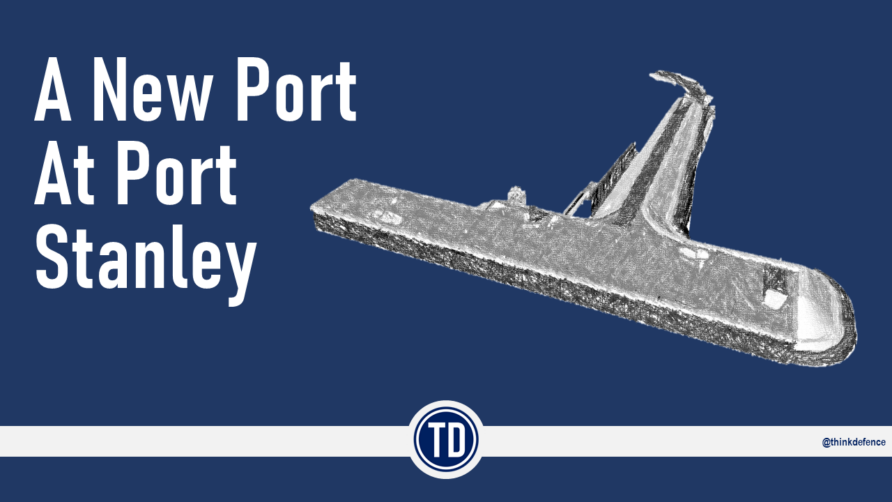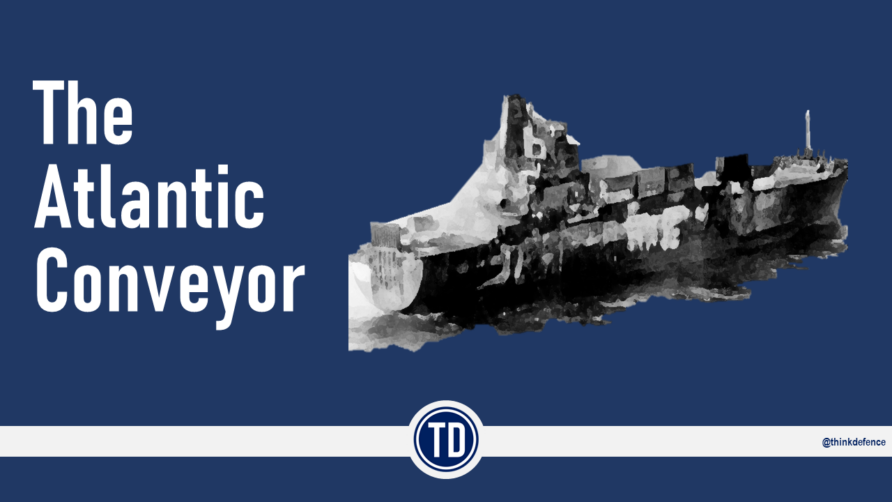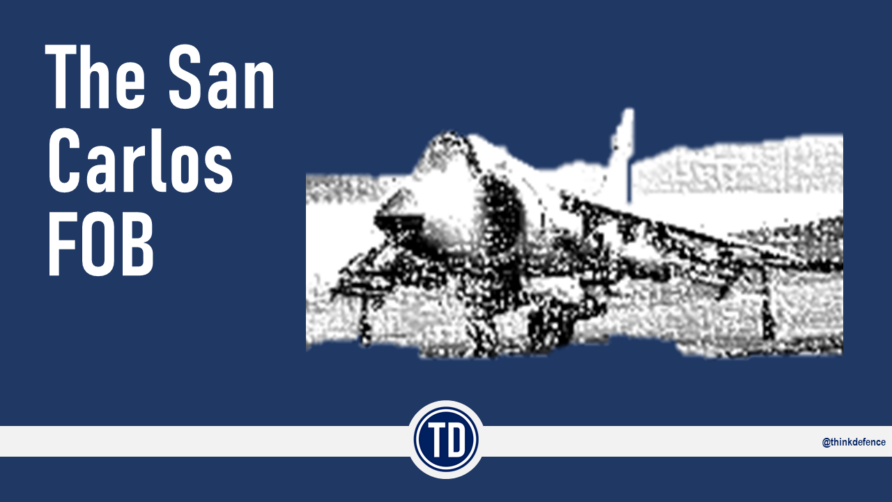Before the 1982 conflict, aviation on the Falkland Islands was increasingly important to the health, wealth, and well-being of the islanders.
During WWII, many seaplanes visited the islands, this Sunderland for example.
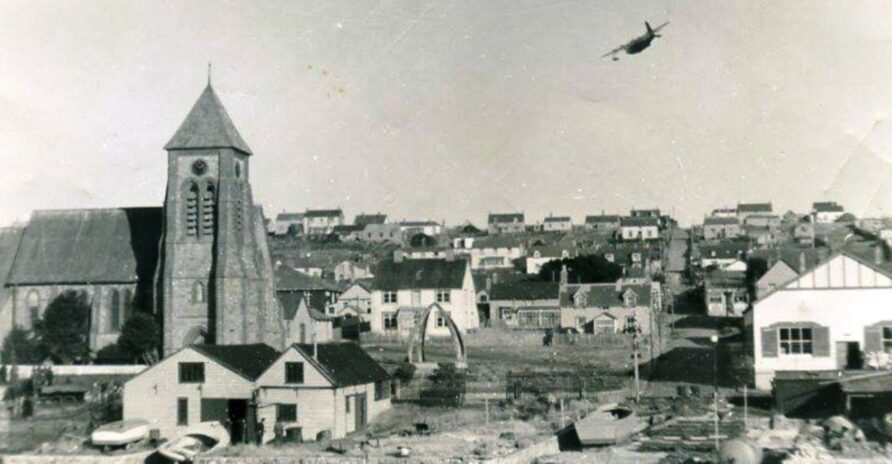
The image below shows a Falkland Islands and Dependencies Aerial Survey Expedition (FIDASE) CANSO flying boat, sometime between 1955 and 1957, on its way to Deception Island.
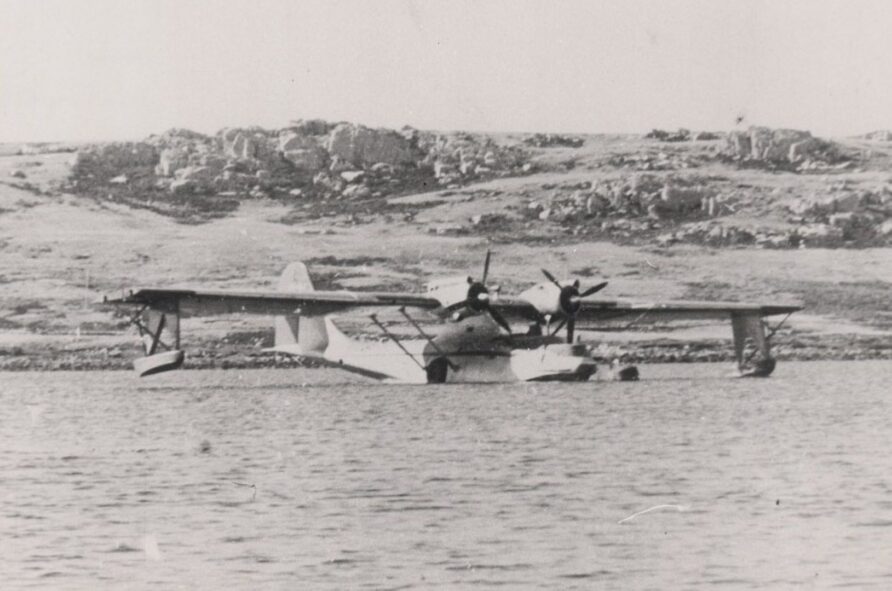
The two PBY-5A CANSO aircraft were provided by the Hunting Aerospace Surveys Ltd company.
In 1944, the new Governor of the Falkland Islands, Miles Clifford, proposed that the Australian Flying Doctor Service would be an ideal model for a new aviation service on the islands. Reportedly, after reading about it in a Reader’s Digest on his journey south.
A pair of ex-RAF Taylorcraft Austers were located, purchased for £700 and shipped to the islands on the RRS John Biscoe in 1948.
G-AJCH and G-AJCI became VP-FAA and VP-FAB.
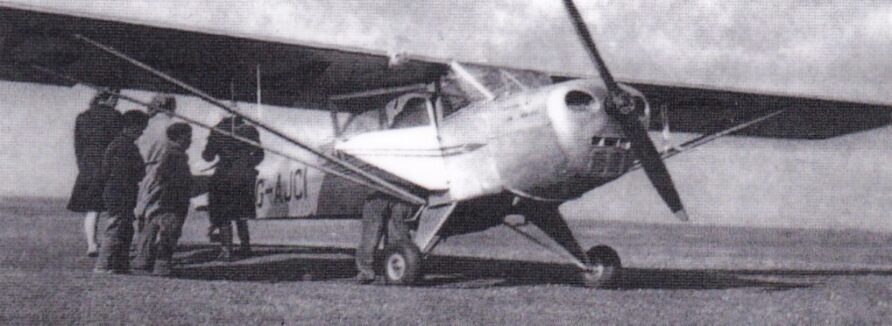
After reassembly at Stanley Racecourse, they were flying by March 1949.
Their first operational use was in transporting a child named Sandra Short with peritonitis from North Arm in East Falkland. The mission was a success, the young patient was saved, on Christmas Day.
Suitable landing strips on the Falkland Islands were uncommon and after a rough landing at San Carlos, one of the Austers was damaged.
After repair, it was converted to a float plane.
After the Austers, the Falkland Island Government Aviation Service (FIGAS) made use of a second-hand Canadian Noorduyn Norseman 5 float plane.
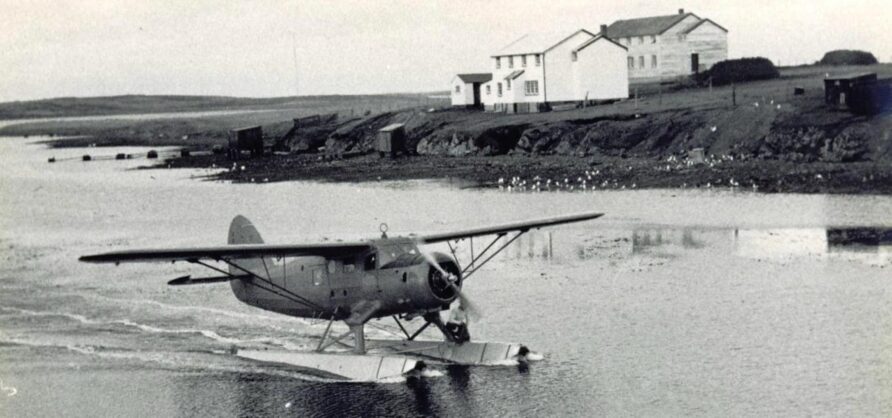
At this point, floatplanes were still the preferred option. When this became unserviceable due to corrosion, it was replaced with a DHC-2 Beaver, operated from 1955 to 1956.
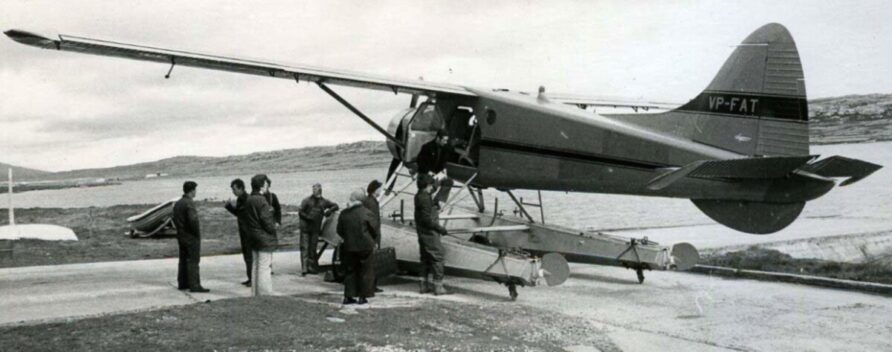
After an accident, it was replaced with another Beaver that flew until retirement in 1967.
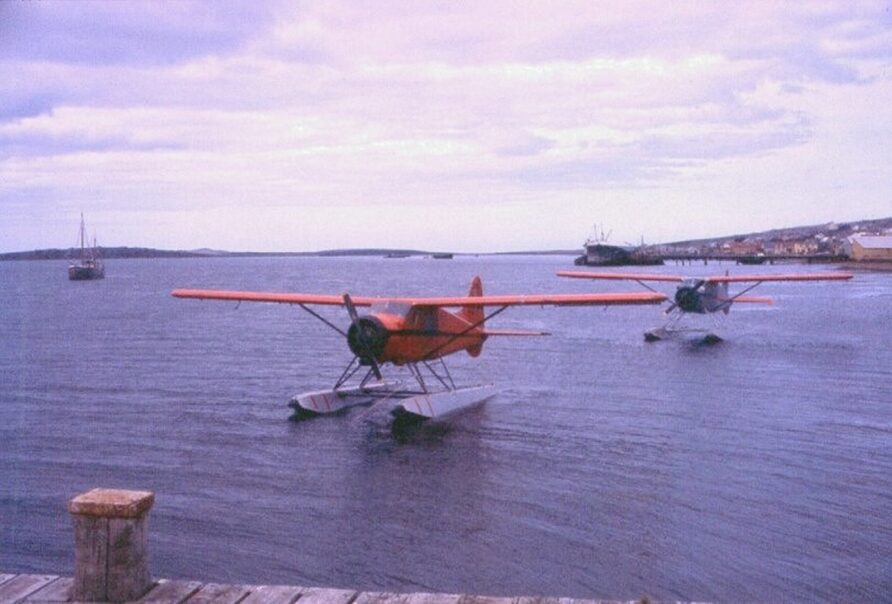
Because most of the settlements were near the sea, the float plane enabled air transportation without creating runways, but in many instances, sea conditions made landing impossible.
The aircraft were hangared near a launch ramp, near Port Stanley.
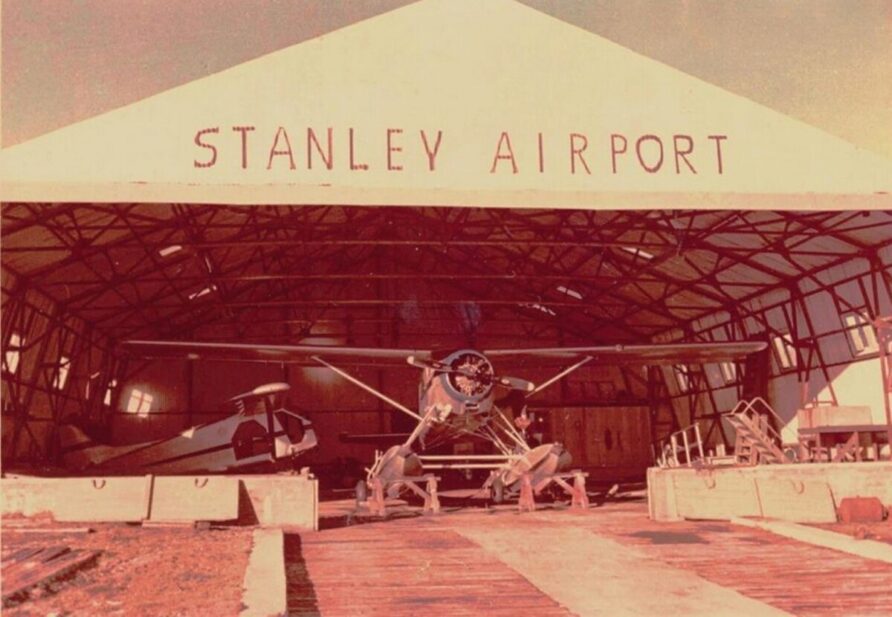
The same hangar would be used to store Argentine war dead in 1982.
The first notable Argentine aviation-related incident came in 1964 when Miguel Fitzgerald flew a Cessna 185 to the Falkland Islands and landed on Stanley Racecourse.
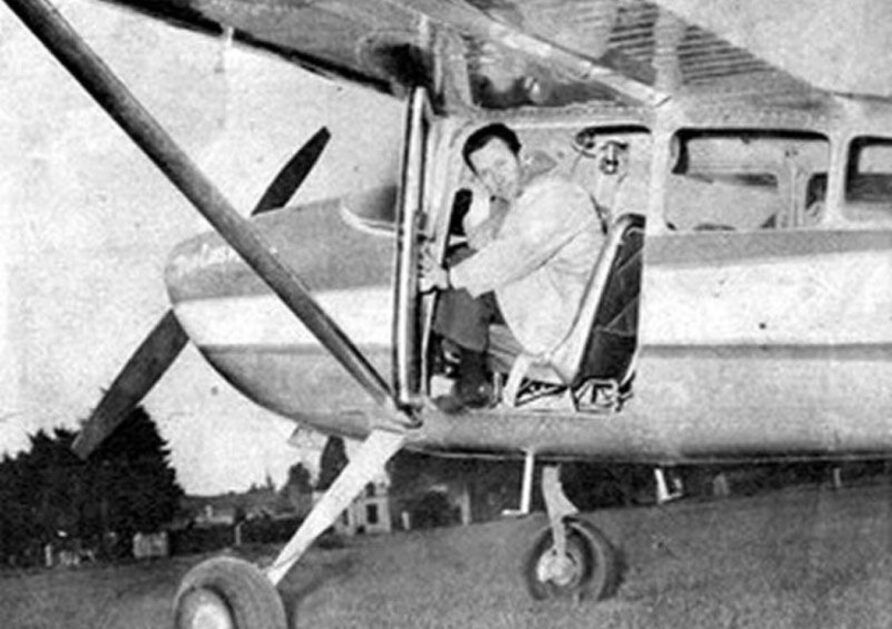
Recounting his flight, Miguel said;
Several times I had to abandon my attempt to fly to the Falklands for various reasons. If I had announced my intention, declaring on the flight plan, I would not have been allowed to leave. The same day I turned thirty-nine years, I kissed my wife and my children walked me to the plane “Cessna 185” whose seats had been replaced by fuel tanks and which had a radio-telephone. With chocolate and coffee supplies, the flight to Rio Gallegos, capital of Santa Cruz province , was completed, followed immediately toward the Malvino archipelago, which is a five hundred and fifty kilometres.
Navigating between clouds, I noticed some clearing that enabled me to fix the status of the islands, orienting between West Falkland and East Falkland when I saw the San Carlos channel. The British flag flew over the governor’s residence, showing the wind direction, which I used to land, after circling. I landed on a horse racing field…
I immediately hoisted the Argentina flag on a pole. Five people came and asked me in English if I wanted or needed anything. Ten minutes later, I got up again to address the flight to Rio Gallegos, my desire fulfilled.
The aircraft is currently in a museum.
Not amused, the Colonial Secretary, Mr WH Thompson, ordered the racecourse be furnished with obstructions for when not in use.
Unfortunately, they were removed sometime later.
Two years later, the racecourse was to see another unwanted aircraft visitor.
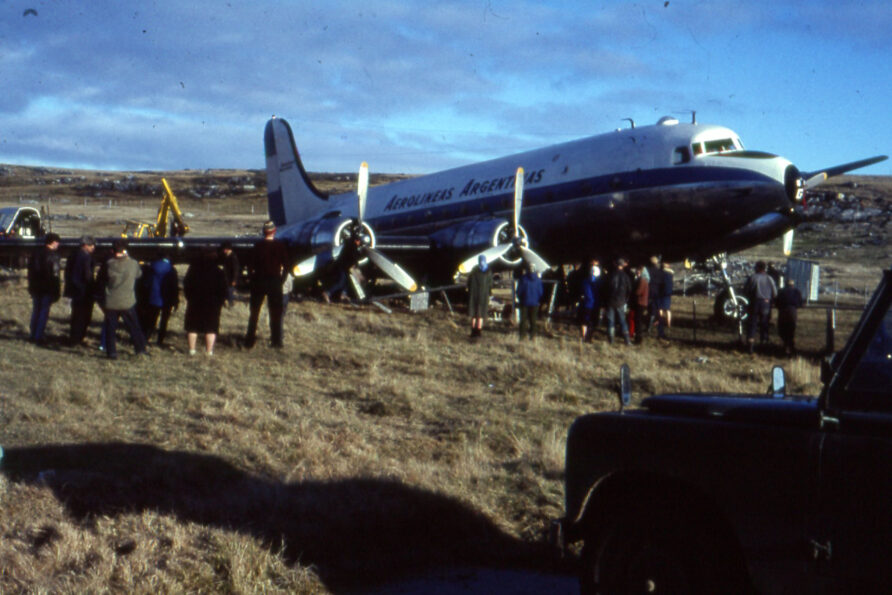
A short time after the World Cup quarter-final defeat of Argentina by the England team, on September 28th, 1966, a group of Argentine radicals (Condor Group) hijacked an Aerolíneas DC4 and forced the pilot to fly to the Falkland Islands.
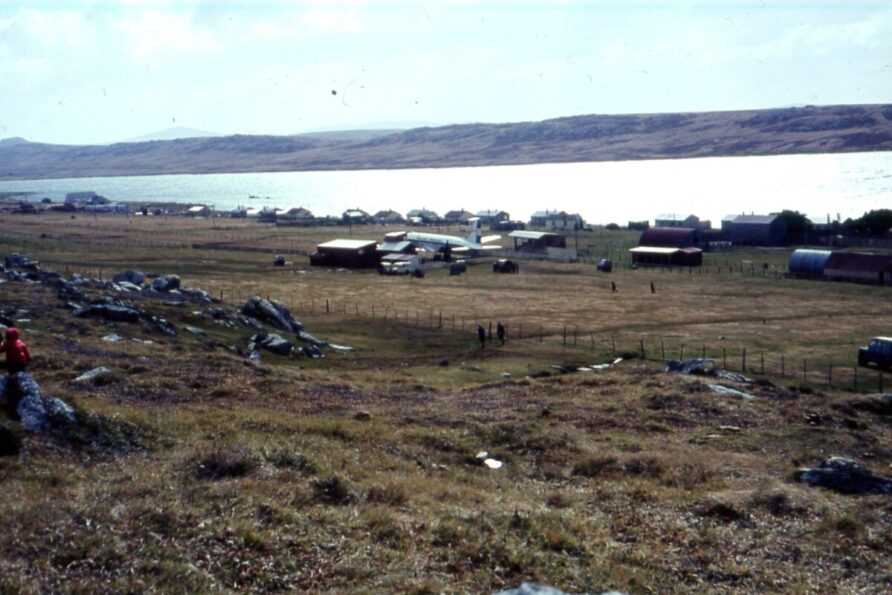
The group included eighteen members of the metalworkers union and a journalist named Dardo Cabo.
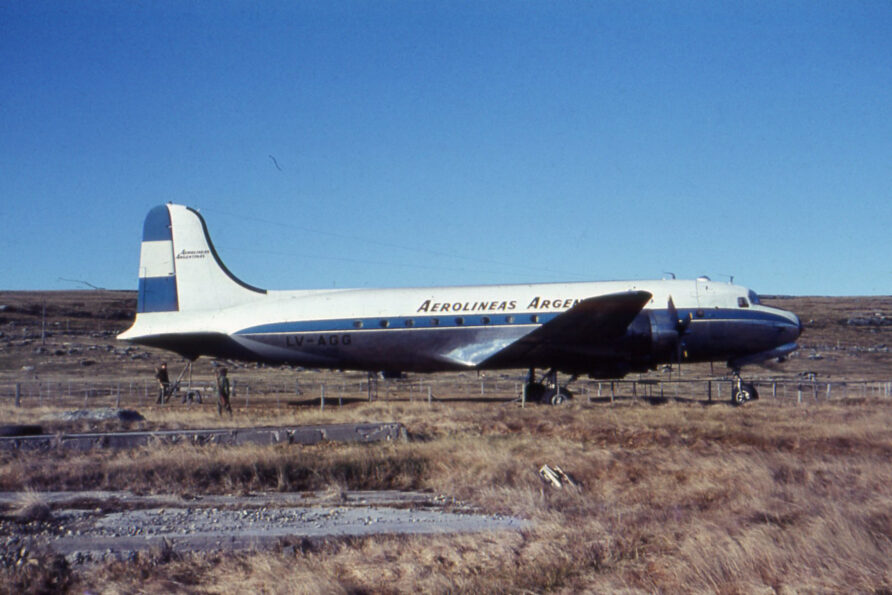
There is some dispute about whether they knew Stanley had no runway or not, but when it arrived, the pilot executed a very skilled landing on the short racecourse.
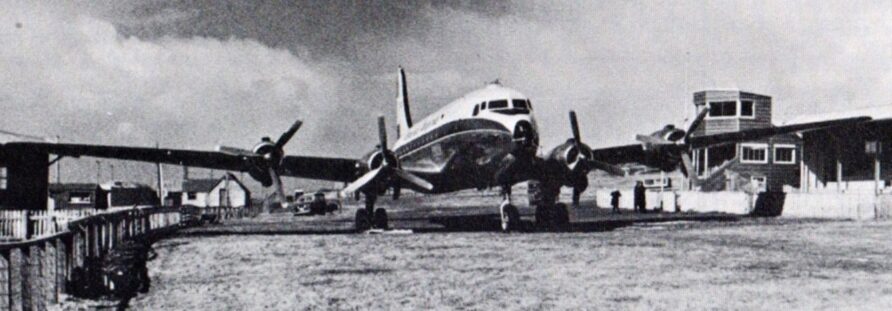
Three Falkland Islanders went to assist but were taken hostage, although, in some accounts, the hostages were Royal Marines.
Soon after, the aircraft was surrounded by a fully armed contingent from the Falkland Islands Defence Force and Royal Marines. Later that day, the hostages were exchanged for the Royal Marines Captain, Ian Martin, and local Police Sergeant, Terry Peck.
Using a familiar tactic, the island’s defenders took to ostentatiously demonstrating the value of copious amounts of warm food and tea, whilst the erstwhile invaders shivered under the wing as the temperature plummeted.
After thirty-six hours, common sense and a helpful intervention from a local Catholic priest named Father Rodolfo Roel ended the stand-off. The aircraft did not have enough fuel for the return leg and was bogged in, but this was soon rectified, and the aircraft was sent on its way, the hijackers repatriated on board the ship Bahía Buen Suceso.
Carbo was arrested when back in Argentina and served three years in prison, eventually executed by the Junta in 1972.
The others served shorter sentences.
The incident resulted in an increase in the size of the Royal Marines contingent on the island, Naval Party 8901.
The final incursion occurred in 1968, Señores Fitzgerald again. This time, he flew a twin-engine Grand Commander, owned by the Daily Chronicle.
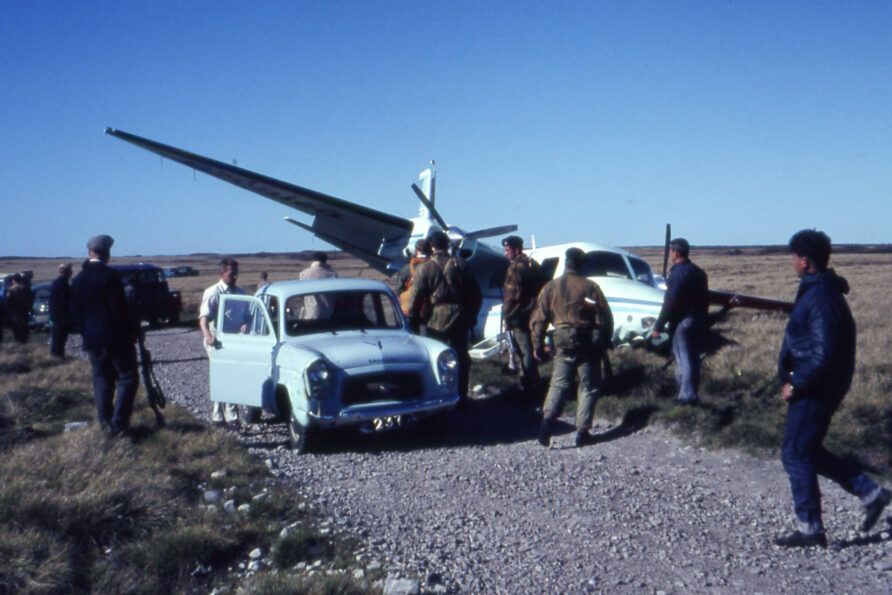
Because the racecourse had been blocked, he was forced to land on Eliza Cove Road, damaging the aircraft in the process.
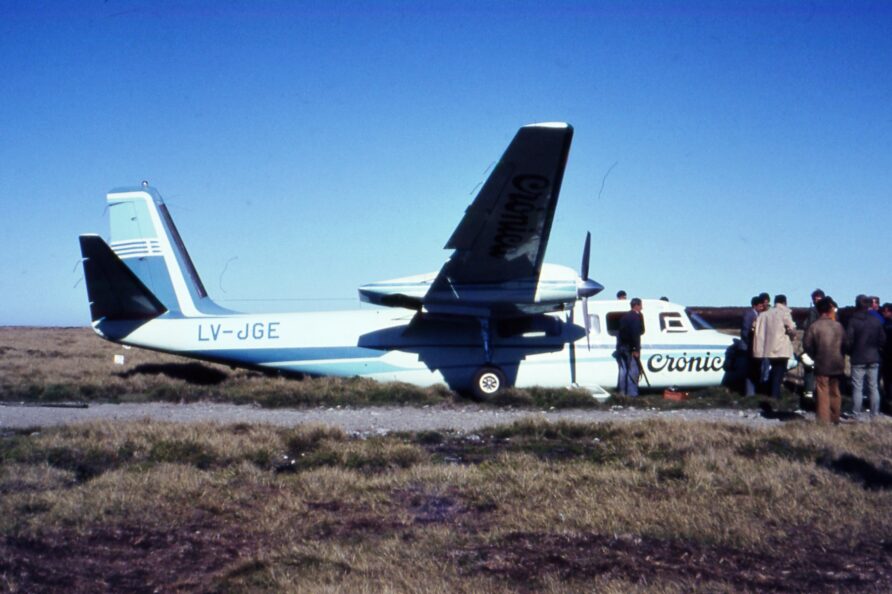
Video
The aircraft and its passengers (after spending 48 hours in a cell) were repatriated to Argentina by HMS Endurance.
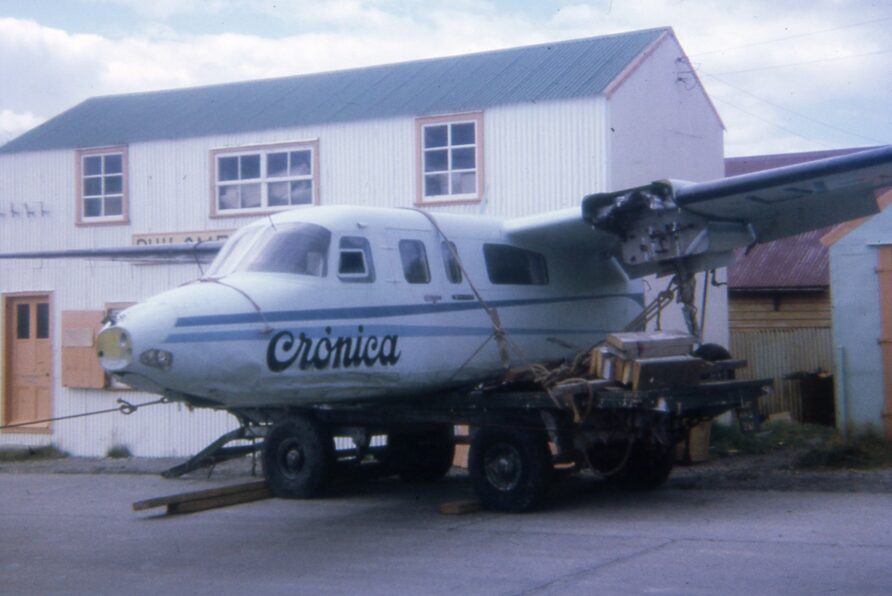
Both countries agreed that part of a normalisation process would require improved transportation links.
Think Defence is a hobby, a serious hobby, but a hobby nonetheless.
I want to avoid charging for content, but hosting fees, software subscriptions and other services add up, so to help me keep the show on the road, I ask that you support the site in any way you can. It is hugely appreciated.
Advertising
You might see Google adverts depending on where you are on the site, please click one if it interests you. I know they can be annoying, but they are the one thing that returns the most.
Make a Donation
Donations can be made at a third-party site called Ko_fi.

Think Defence Merch
Everything from a Brimstone sticker to a Bailey Bridge duvet cover, pop over to the Think Defence Merchandise Store at Red Bubble.
Some might be marked as ‘mature content’ because it is a firearm!
Affiliate Links
Amazon and the occasional product link might appear in the content, you know the drill, I get a small cut if you go on to make a purchase
Following a few exploratory flights by the FAA, Líneas Aéreas del Estado (LADE), the Argentine military airline, operated an amphibian aircraft service to the Falklands using Grumman Albatross aircraft
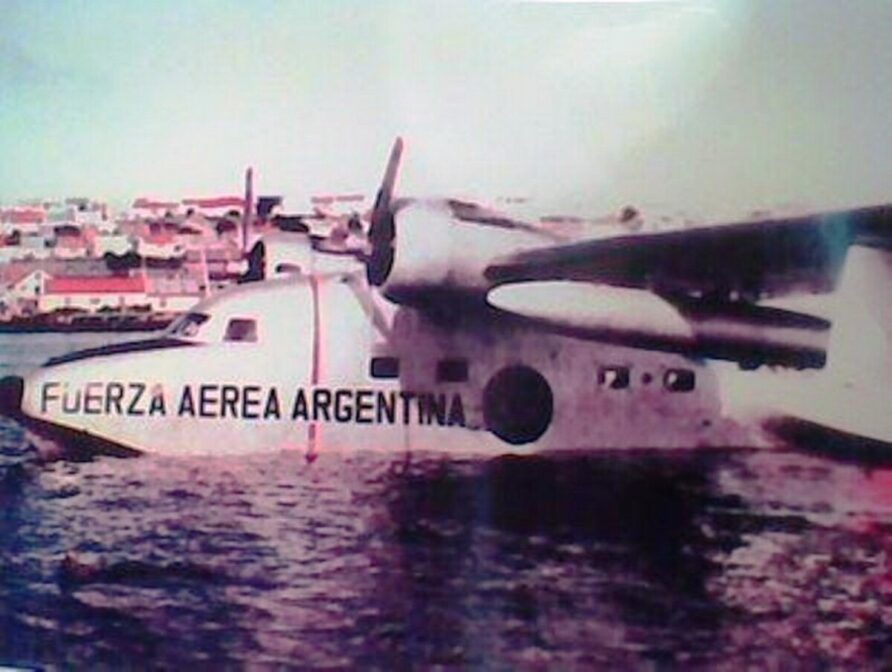
On February 15th, 1971, the first flight was a medical evacuation for a critically ill sailor.
The first passenger flight was on July 3rd and on the 15th the ‘Communications Agreement’ was signed to regularise traffic on a two-weekly basis.
This link provides a good account of the 1971 Agreement.
The next stage was the construction of a runway.
After the signing of a communications agreement, the UK and Argentina agreed to build a temporary runway to the South of Stanley, at Hookers Point.
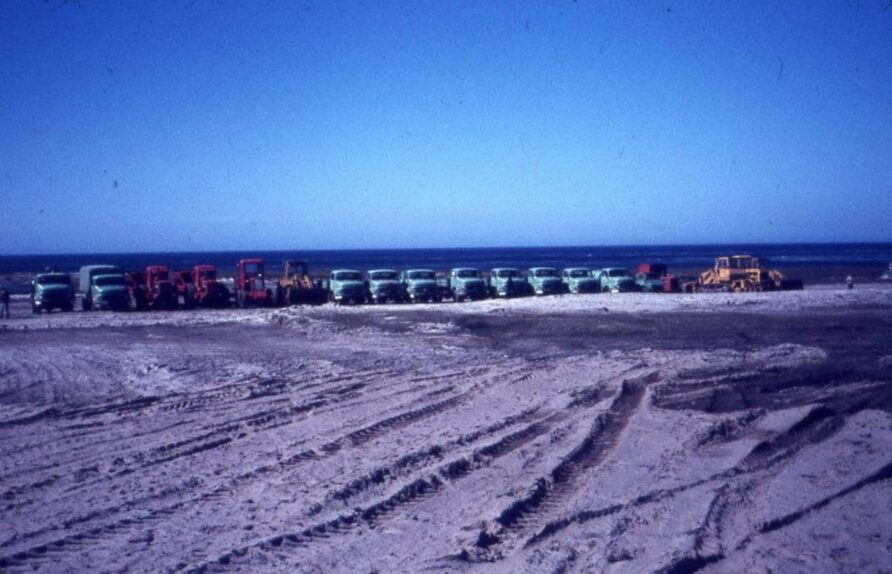
The temporary runway at Hookers Point was constructed by Grupo I de Construcciones de la Fuerza Aérea (FAA) using aluminium matting from the Harvey Aluminium Co in the USA, it was 730m long by 20m wide, extended to 800m at a later point.
The agreement called for the UK to fund the construction materials (including $1m for the matting) and Argentina to provide labour and plant.

A couple of small outbuildings supported basic maintenance and storage.
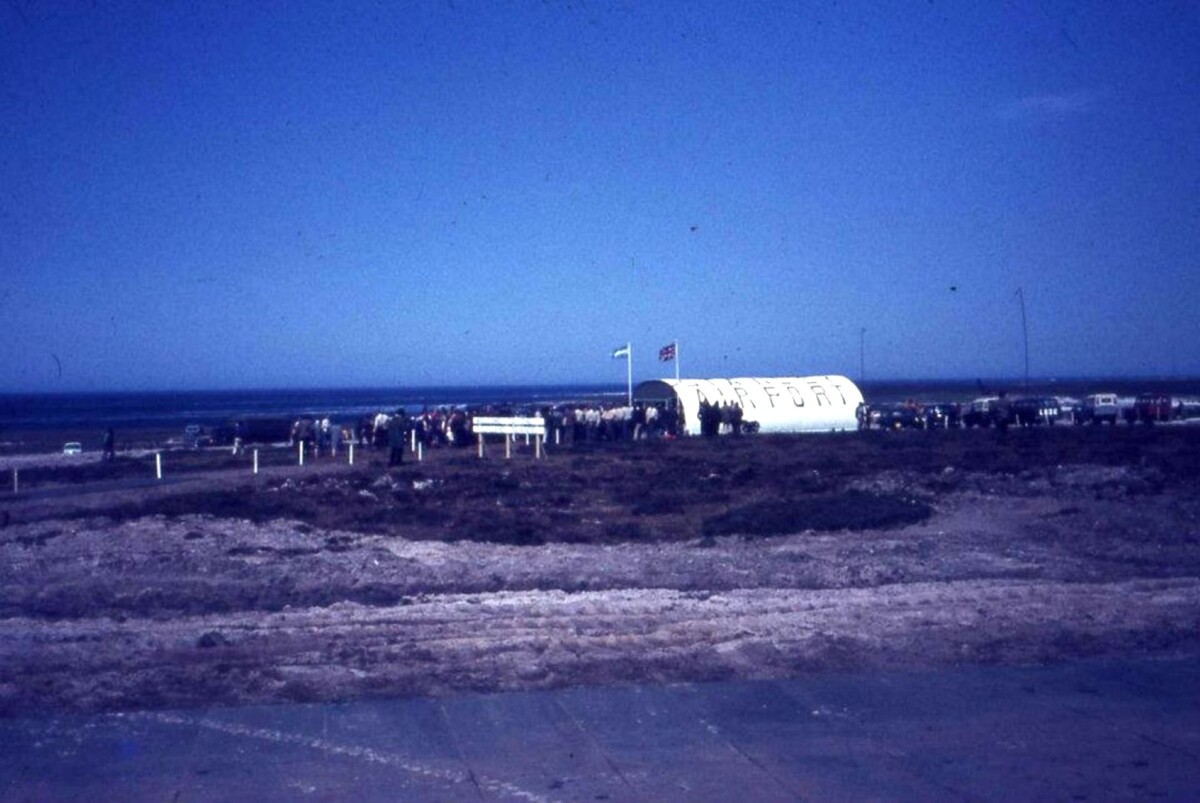
Stanley Airport’s (Hookers Point) first landing took place on the 16th of November 1972, a Fokker F-27.
Video
On the first anniversary of the runway at Hookers Point being operational, a delegation from Argentina landed.
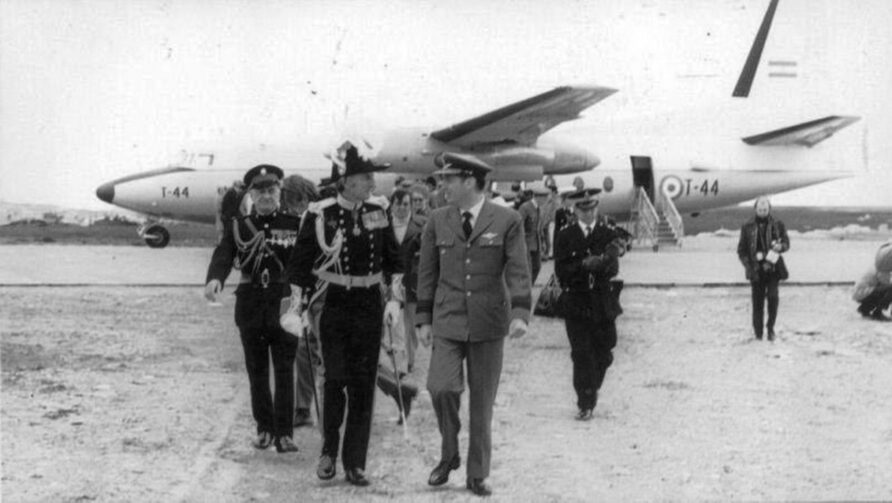
As can be seen in the image above, the Sunday best uniforms were out and in a US Marine Corps Staff Paper titled Offensive Air Operations of the Falklands War, Major Walter F. DeHoust recalls;
The Argentine officials proceeding on the first flight of the air service turned out to be Argentine senior military officers in full uniform. Hearing of this, the Falkland Islands’ governor, Toby Lewis, was ordered to hoist the Union Jack and appear at the ceremony himself in full dress gubernatorial regalia.
The islanders themselves feared that ceremonially clad Argentines represented a covert invasion, perhaps even supported by the British Foreign Office.
The islands’ secretary, John Laing, felt a demonstration was likely and called out the Marine guard, a permanent detachment of military stationed on the Falklands to maintain order
In what will become significant later, the new runway was extended to 800m using additional AM-2 aluminium matting, works completed in October 1976.
The occasional C130, Learjet and FMA IA50 Guaraní flights were made, and the service continued for several uneventful years until transferred to Stanley Airport.
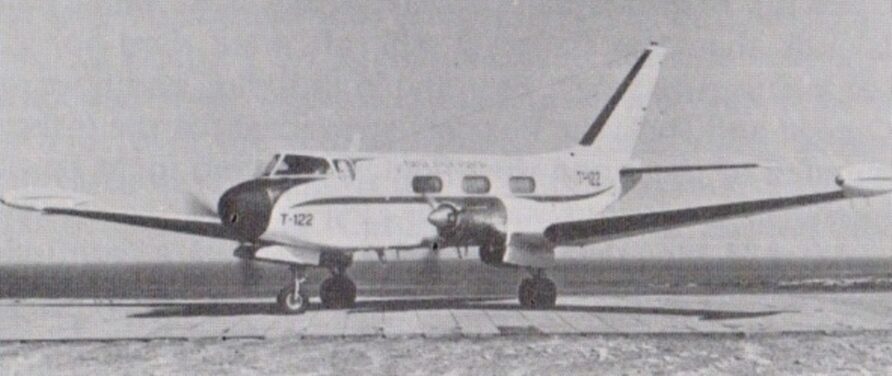
Hookers Point remained operational after Stanley Airport was built for temporary and emergency use until May 1978 when a storm scattered many of the aluminium matting runway panels.

A solution to the problem was already well underway, a permanent runway East of Stanley at Cape Pembroke.
The £4.2 million build contract was awarded to Johnson Construction in 1973 with the first works on drainage commencing in 1974. The runway was to be 1,200m long, 45m wide and constructed to a standard that would allow Fokker F-27 Friendship and Hawker Siddeley HS 748 to land.
It had a minimum Load Classification Number (LCN) of 16 although in places it was as high as 30, 300 mm of compacted crushed stone on white sand with a minimum of 32 mm of asphalt.
A single airport terminal building and parking apron were also built, in addition to a number of smaller storage buildings.
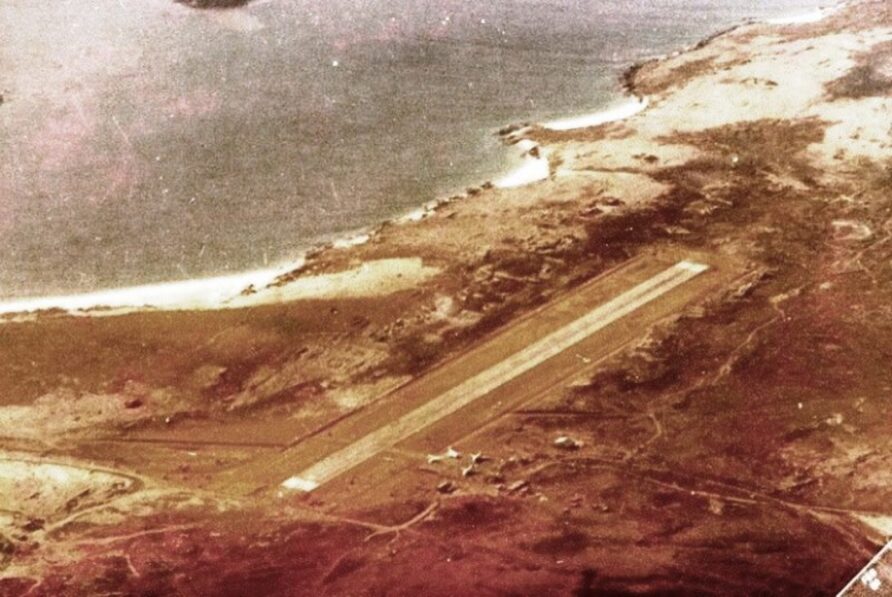
The islanders knew full that by failing to build longer and stronger, they would be dependent upon Argentina, a position no better than the runway at Hookers Point.
An extension was proposed but denied for political reasons, despite it being of modest cost.
Discussions between the Falkland Islands Legislative Council and oil exploration companies commenced in Stanley, followed by the Daily Chronicle in Argentina launching an appeal fund for an invasion of the islands!
The diplomatic and public mood towards the UK and Falkland Islands darkened, with more or less open threats of invasion. On the 5th of February 1976, the Argentine frigate Almirante Storni fired shots across the bow of the RRS Shackleton 78 miles (ca. 126 km) South of Stanley.
A 1976 review by the Falkland Islands Government Aviation Service (FIGAS) concluded that given the by now widespread availability of grass airstrips at most of the settlements, the floatplanes should be withdrawn and replaced with larger, land only aircraft. The aircraft selected was a Britten-Norman BN-2A-27 Islander.
Conventional landing aircraft were also much cheaper to maintain than floatplanes.
On the 17th May 1978, the first Fokker F-28 Fellowship landing at Stanley.
Flights took place before the airport was officially opened on May 1, 1979, by Sir Vivian Fuchs, the first ‘official’ landing was by a local named Jim Kerr in a Cessna 172.
The first jet aircraft to operate from the Falkland Islands was a LADE Fokker F28 Fellowship.
Stanley Airport then became the home for the remaining Beavers and new Islanders of the Falkland Islands Government Air Service (FIGAS).
The first Islander was brought into service by FIGAS in 1979, VP-FAY.
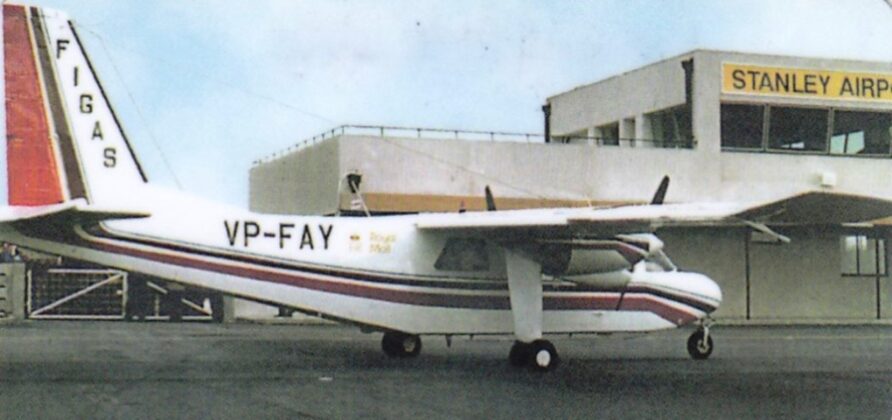
In the same year, an employee of the Scottish operator Loganair surveyed the grass airstrips of the Falkland Islands.
He found 41 grass or hard sand landing sites, all of ‘good to excellent quality, with suitable drainage for extended operation times. By the end of the year, FIGAS had carried just under four thousand passengers.
There were several reports that Argentine military pilots flew both as passengers and pilots on the regular LADE flights, but of course, these were ignored.
15 years of the Foreign and Commonwealth Office trying their hardest to appease Argentina at the expense of the Islanders came to a head in December 1980, a report in the Times noting;
The House of Commons came together in total concord yesterday to voice its deep suspicion of the intentions of the Foreign Office and of Mr Nicholas Ridley, a Minister of State, for the future of the Falkland Islands and their relationship with the Argentine.
Seldom can a minister have had such a drubbing from all sides of the House, and Mr Ridley was left in no doubt that whatever Machiavellian intrigues he and the Foreign Office may be up to, they will come to nothing if they involve harming a hair on the heads of the islanders.
The minister was left stammering and confused, as in vain he protested that nothing would be done, and no arrangement would be agreed with Argentina that had not been first endorsed both by the islanders and by Parliament.
Mr Ridley, who has just returned from a visit to the Falklands, could, not have received a colder welcome. MPs were quick to draw attention to the apparent contradiction between Mr Ridley’s assertion that the British Government had no doubt about our sovereignty over the islands and his proposal to the islanders that a solution might be found if they would agree to exchange the title of sovereignty against a long lease-back to Britain.
Another solution might be found by some method of freezing the dispute for a period, Mr Ridley added. It was essential, he added, that the Government should be guided by the wishes of the islanders and any solution must preserve British administration, law, and way of life while releasing the potential of the Falkland’s economy and maritime resources, which were at present blighted by the dispute.
Mr Peter Shore, the Opposition spokesman on foreign affairs, voiced the views of MPs of all parties when he told the minister that this was a worrying statement and that the proposal for a leasing arrangement was a major weakening of our long-held position on sovereignty in the islands.
To make that proposal in so specific and public a manner was likely only to harden Argentine policy and undermine the confidence of the islanders. From the Conservative benches, Mr Julian Amery told the minister that his statement was profoundly disturbing.
For years the Foreign Office had wanted to get rid of this commitment, although the islands had an important part to play in the future of the South Atlantic. Angrily, Mr Ridley rejected the suggestion that he was merely acting as the errand boy of the Foreign Office.
Viscount Cranbourne, another Conservative MP, told Mr Ridley that his statement had caused disquiet among his supporters and that by merely entertaining the possibility of surrender of sovereignty he was encouraging the islanders to think that they did not enjoy the support of their mother country.
From the Liberal benches, Mr Russell Johnston said that there was considerable doubt about Mr Ridley’s intentions. Shameful schemes for getting rid of the islands had been festering in the Foreign Office for years. Mr Ridley again protested his innocence and his good intentions to loud shouts of ‘no’.
A few moments later, Mr Ridley floundered into deeper water. when he was asked whether the Government would accept the views of the islanders if they opted for the maintenance of the status quo.
The minister seemed to many to be dodging the issue when he replied: ‘We shall have to wait to see how the situation develops’
The one certainty of yesterday’s exchanges for the Falkland Islanders was that if ever the ‘festering plots’ of the Foreign Office should reach the floor of the House of Commons, they will be given very short shrift
June 1981 saw an overflight of South Georgia by an FAA C-130 Hercules, and continued prevarication and mixed messages from the British Government, for example, the announcement of the withdrawal of HMS Endurance, HMY Britannia got a refit, though.
I can confirm that HMS “Endurance” will be paid off in 1982 on her return to the United Kingdom, following her deployment in the South Atlantic and the Antarctic Region later this year.
There are no plans to replace her. However, the Royal Marines garrison in the Falkland Islands will be maintained at its present strength, and from time to time, Her Majesty’s ships will be deployed in the area.
Lord Trefgarne, Foreign Office Minister, 30th June 1981
And despite the political environment becoming increasingly toxic and the likelihood of a military action equally obvious, flights continued, like this one in 1981
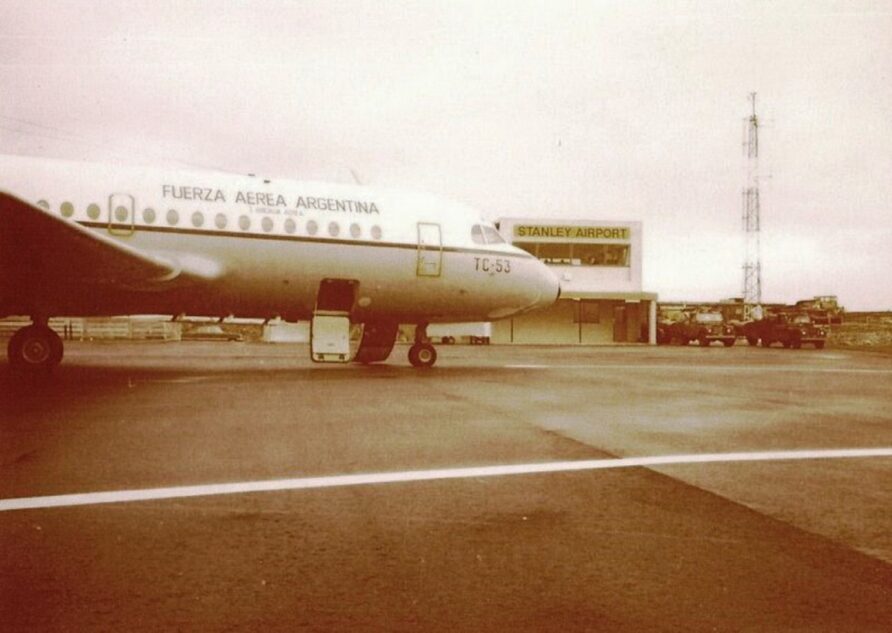
Until the occupation, LADE carried 465,763 passengers and 21,597 pounds (ca. 10 t) of cargo between the Falkland Islands and the mainland, amassing 3,553 hours.

